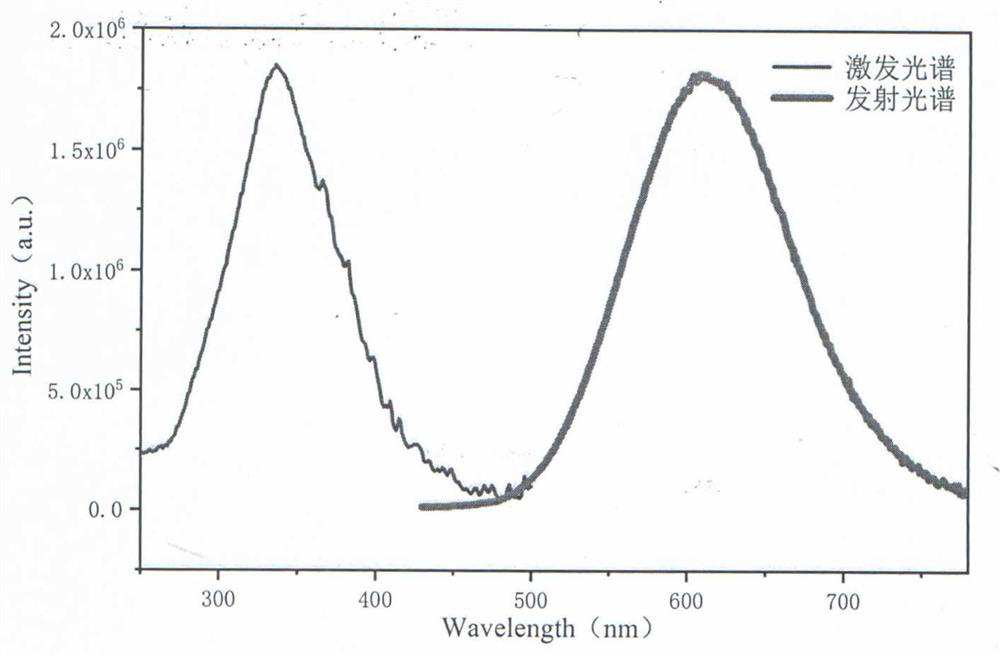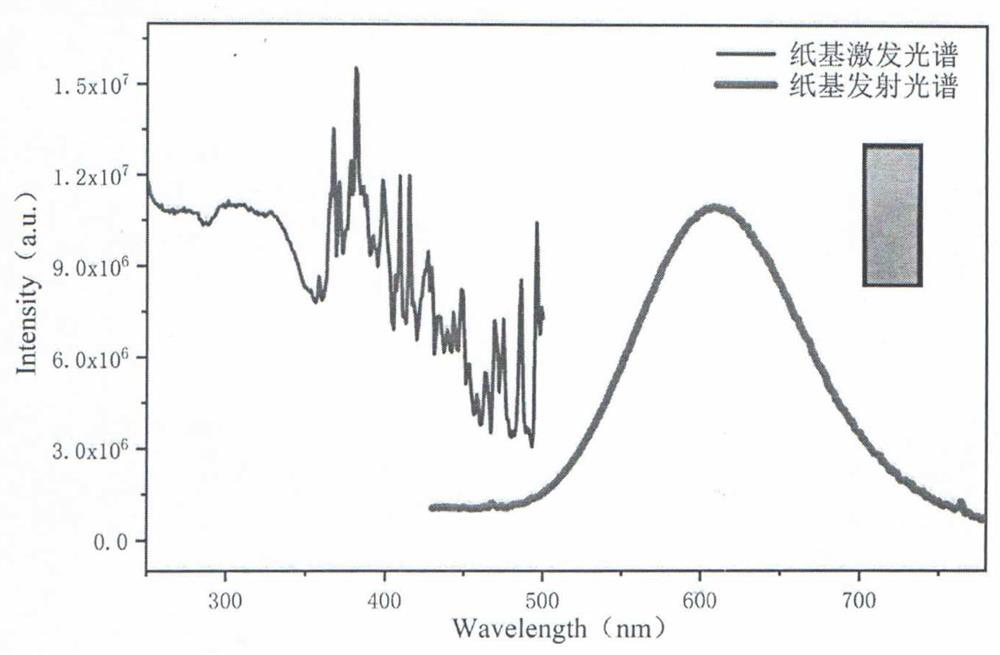Method for repeatedly detecting 2, 4, 6-trinitrotoluene by wiping type fluorescent test paper
A trinitrotoluene and fluorescence detection technology, which is applied in fluorescence/phosphorescence, measuring devices, and material analysis through optical means, can solve the problems of cumbersome synthesis steps and processing of fluorescence detection materials, and achieve solid phase contact detection and visualization High-level, low-cost effect
- Summary
- Abstract
- Description
- Claims
- Application Information
AI Technical Summary
Problems solved by technology
Method used
Image
Examples
Embodiment 1
[0030] Preparation of fluorescence test strips:
[0031] A. At room temperature, take 0.5mL of Cu(NO 3 ) 2 Aqueous solution and 2.5mL 50mM aqueous glutathione solution, after stirring and mixing evenly for 5min, adjust the pH 5.0 to a light yellow transparent solution with a molar concentration of NaOH of 2M, and then add anhydrous ethanol with a volume multiple of 19 times of the mixed solution of copper nitrate and glutathione to obtain a copper nanocluster solution;
[0032] b. Soak the sheared filter paper in the copper nanocluster solution obtained in step a for 1h, and obtain the deposited fluorescence test paper after natural drying, which can emit bright orange fluorescence under the illumination of 365nm ultraviolet lamp;
[0033] Paper-based fluorescence detection of 2,4,6-trinitrotoluene:
[0034] c. The fluorescence test paper prepared in step b wipes the 2,4,6-trinitrotoluene (TNT) solid powder remaining on the surface of the suspicious substance, the test paper under...
Embodiment 2
[0037] Preparation of fluorescence test strips:
[0038] A. At room temperature, take 0.5mL of Cu(NO. 30mM 3 ) 2 Aqueous solution and 2.5mL 30mM aqueous glutathione solution, stirred and mixed evenly for 1min, adjusted pH 4.0 with molar concentration of NaOH of 0.5M, and then added copper nitrate and glutathione mixed solution volume multiple 49 times of anhydrous ethanol to obtain copper nanocluster solution;
[0039]b. Soak the sheared filter paper in the copper nanocluster solution obtained in step a for 2h, and obtain the deposited fluorescence test paper after natural drying, which can emit bright orange fluorescence under the illumination of 330nm ultraviolet lamp;
[0040] Paper-based fluorescence detection of 2,4,6-trinitrotoluene:
[0041] c. The fluorescence test paper prepared in step b is wiped with the 2,4,6-trinitrotoluene (TNT) solid powder remaining on the surface of the suspicious substance, and the irradiation test paper is carried out with a portable ultraviolet...
Embodiment 3
[0044] Preparation of fluorescence test strips:
[0045] A. At room temperature, take 0.5mL of Cu(NO 3 ) 2 Aqueous solution and 2.5mL of 50mM aqueous glutathione solution, after stirring and mixing evenly for 8min, adjust pH 6.0 with a molar concentration of 1M NaOH, and then add copper nitrate and glutathione mixed solution volume multiple of 2.33 times of anhydrous ethanol to obtain copper nanocluster solution;
[0046] b. The sheared filter paper is soaked in the copper nanocluster solution obtained in step a for 4h, and the deposited fluorescence test paper is obtained after natural drying, and bright orange fluorescence can be emitted under the illumination of 340nm ultraviolet lamp;
[0047] Paper-based fluorescence detection of 2,4,6-trinitrotoluene:
[0048] c. Wipe the 2,4,6-trinitrotoluene (TNT) solid powder remaining on the surface of the trunk with the fluorescence test paper prepared in step b, scan the test strip with a fluorescence spectrometer to detect the fluores...
PUM
 Login to View More
Login to View More Abstract
Description
Claims
Application Information
 Login to View More
Login to View More - R&D
- Intellectual Property
- Life Sciences
- Materials
- Tech Scout
- Unparalleled Data Quality
- Higher Quality Content
- 60% Fewer Hallucinations
Browse by: Latest US Patents, China's latest patents, Technical Efficacy Thesaurus, Application Domain, Technology Topic, Popular Technical Reports.
© 2025 PatSnap. All rights reserved.Legal|Privacy policy|Modern Slavery Act Transparency Statement|Sitemap|About US| Contact US: help@patsnap.com



